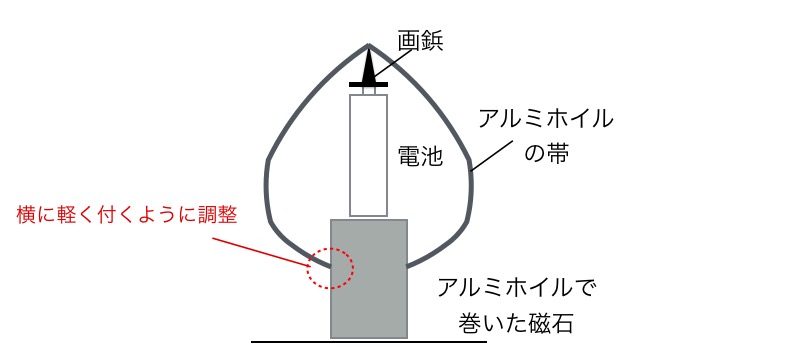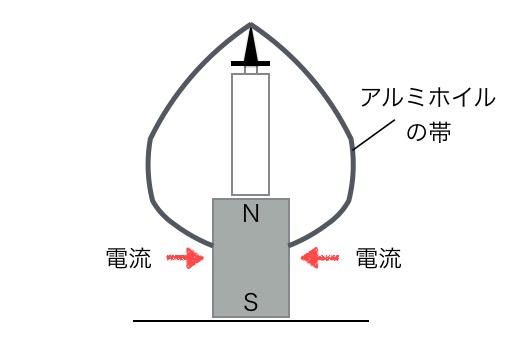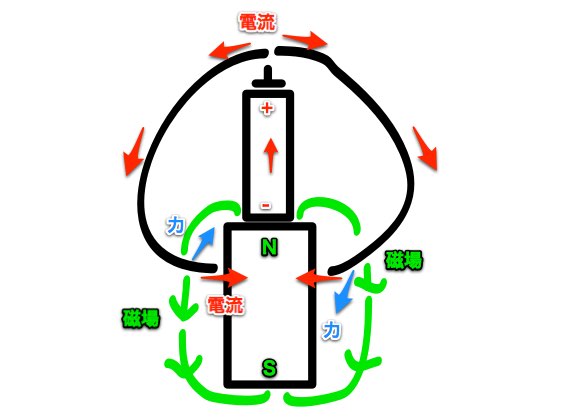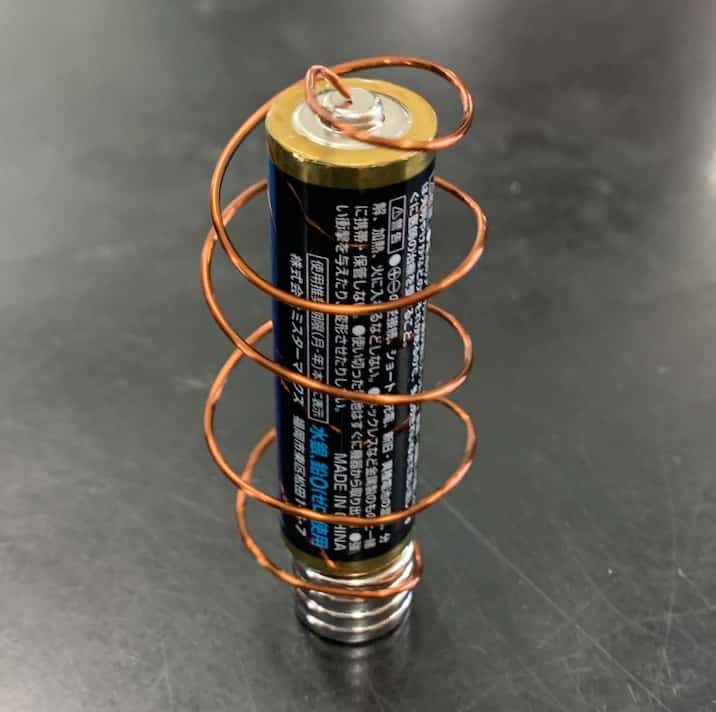How to Build the World’s First Motor: The Faraday Motor
Have you ever seen a motor like this?
First, you have to watch this video. I guarantee you’ll be amazed! For some reason, a piece of aluminum foil is spinning around and around on a battery.
At first glance, it looks like it’s made of nothing but aluminum foil, a battery, and a thumbtack, but for no apparent reason, the foil just keeps spinning on the battery. When you see this, you might be completely stumped, with no idea what’s going on.
In fact, this fascinating device is a type of “motor” that converts electrical energy into motion. What’s more, it’s a modern take on the very first motor ever invented: the Faraday motor. In this article, we’ll take a deep dive into how to build this simple yet amazing motor and the scientific principles behind it.
You can get all the materials you need from a 100-yen store, and you don’t need any difficult knowledge to understand it. By the end, you’ll know the secret behind this seemingly magical phenomenon. So, why not open the door to science with us?
Science Recipe
What you’ll need:
- Aluminum foil
- Battery
- Pushpin
- 5 ferrite magnets

Step-by-Step Instructions
1. Building the Base
Stack five or more ferrite magnets and wrap them neatly with aluminum foil.

② Making the Rotating Part
Cut the aluminum foil into a strip about 5 cm wide and fold it in half lengthwise. This will give you a strip about 2.5 cm wide. Then fold it again at the center.

Then, shape the strip into a form that looks a bit like a chestnut—or maybe like a slime character.

③ Making the Base
Place a battery on top of the foundation you made in step ①. Then, put a thumbtack on top of the battery.

④ Gently Place the Chestnut-Shaped Foil
Carefully set the chestnut-shaped aluminum foil on top.

Place the chestnut-shaped aluminum foil on top. Adjust its length so that both sides of the foil just barely touch the aluminum foil wrapped around the magnet. Watch the video carefully to see how it should look.
This part is the key!
Now it’s complete. Once you let go, the foil will start spinning around and around.
Why does it spin? — The Science of the Faraday Motor
The secret behind this motor lies in the relationship between electricity and magnetism. Remember: when an electric current flows through a wire in a magnetic field, it experiences a force called electromagnetic force. In a Faraday motor, this force is what drives the rotation.

Unraveling the Mechanism: Three Key Elements
-
Electric Current: The current flows from the positive terminal of the battery, through the aluminum foil, and into the magnet.
-
Magnetic Field: The magnet attached to the bottom of the battery creates a strong magnetic field—the space where magnetic forces act.
-
Force (Electromagnetic Force): The interaction between the current and the magnetic field produces a force on the aluminum foil, making it spin.

The direction of this spinning force can be explained by Fleming’s Left-Hand Rule. If you point your middle finger in the direction of the current, and your index finger in the direction of the magnetic field, your thumb will show the direction of the force. Because current flows from the battery and the magnet creates a magnetic field, the aluminum foil constantly receives a force that pushes it in the “spinning” direction. As a result, it keeps twirling around.
The motor invented by Michael Faraday can be considered the ancestor of today’s high-performance motors. Every motor-powered device around us—vacuum cleaners, electric fans, trains, and more—operates on this same simple principle.
This experiment lets you experience the dynamic motion created by the interplay of electricity and magnetism, without the need for any special tools. Try it at home and feel that “Aha!” moment of discovery!
There are also other DIY versions of the Faraday motor you can make. Here’s one example:
This version is made by bending a piece of wire. It tends to spin more smoothly and steadily.



